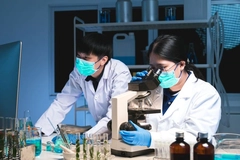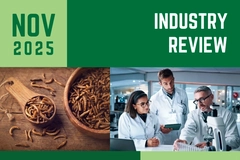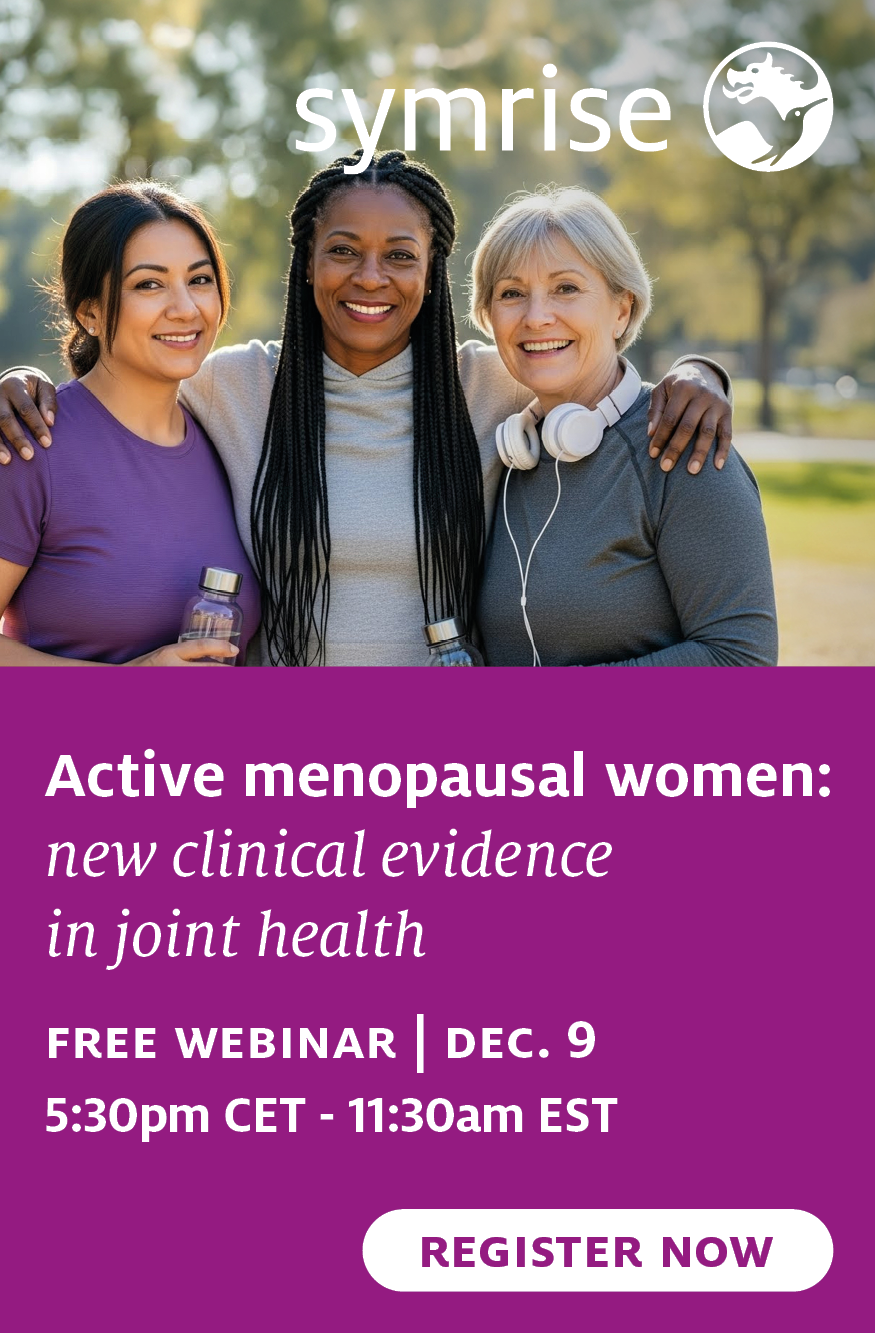Muscle metabolism: Nestlé unveils bioactives for regeneration and strength

New Nestlé research says bioactive nutrients nicotinamide (NAM) and pyridoxine (PN) can accelerate muscle growth and repair. It also finds a polyphenol from olives helps boost energy and muscle performance. Meanwhile, other studies suggest curcumin can provide muscle relief and recovery.
NAM and PN are recognized by the US FDA and European Food Safety Authority (EFSA) for their safety in human use. They work by stimulating resident muscle stem cells (MuSCs). The study highlights their potential to address MuSC dysfunction during muscle loss. Researchers found that the two nutrients are linked to muscle decline during aging.
“Aging impairs the regenerative capacity of muscles at the cellular level,” comments Dr. Pascal Stuelsatz, senior muscle growth and recovery specialist at Nestlé Research. “Our study identified a novel solution to target regeneration and mitigate age-related muscle decline with nutrition.”

The Journal of Clinical Investigation study emphasizes that skeletal muscles depend on MuSCs for strength and regeneration but are impacted by aging (sarcopenia), muscle disease, dystrophies, cancer cachexia or diabetes.
Researchers propose that low NAM and PN levels could contribute to muscle loss by affecting muscle repair through stem cells. They suggest that diet is not the main factor in the link between NAM/PN levels and muscle health. Instead, metabolic changes with age may explain their connection to muscle function.
 NAM/PN stimulates muscle stem cells to promote muscle regeneration and strength (Image credit: Journal of Clinical Investigation).MuSCs for faster muscle recovery
NAM/PN stimulates muscle stem cells to promote muscle regeneration and strength (Image credit: Journal of Clinical Investigation).MuSCs for faster muscle recovery
The study emphasizes the importance of using safe nutritional solutions to speed muscle recovery, particularly after exercise, muscle tears or surgeries that rupture myofibers.
NAM/PN is posited for healthy healing, preventing and managing muscle wasting. Thanks to its molecular mechanisms, PN helps MuSCs differentiate by boosting protein synthesis.
Researchers say PN conversion to PLP (bioactive form of PN) also supports energy metabolism, which may directly or indirectly aid muscle development. However, further research is needed to understand if PN directly triggers AKT signaling or works through PLP.
NAM, a precursor for NAD+, supports MuSC growth in healthy young mice without needing to convert into NAD+, which is known for repairing DNA and supporting cell defense.
The study found that NAM/PN supplementation activated muscular pathways that decline during aging in male rats and human muscles. It also improved myofiber size and reversed aging-related gene expression, but only in regenerating muscle, not in uninjured muscle.
In vitro, NAM and PN boosted myogenic differentiation — the process where MuSCs develop into mature muscle cells — but did not affect the final stage of muscle cell development.
Nestlé published the findings with the French Centre National de la Recherche Scientifique — Institut NeuroMyoGène in Lyon and other external partners.
 Mitochondrial dysfunction is a major hallmark of aging (Image credit: Nestlé).Olive polyphenol for cellular energy
Mitochondrial dysfunction is a major hallmark of aging (Image credit: Nestlé).Olive polyphenol for cellular energy
In a separate study, Nestlé found that olive polyphenol oleuropein can boost cellular energy and muscle performance via mitochondria, the cell’s powerhouse. “Mitochondrial dysfunction is a major hallmark of aging that contributes to physiological decline and chronic diseases during aging,” states the paper.
“These discoveries highlight the power of nutrition to target cellular pathways that decline during aging and muscle wasting disorders,” says Dr. Jérôme Feige, senior expert in musculoskeletal health at Nestlé Research.
“We can translate these insights into nutritional solutions made with a combination of macronutrients along with cellular nutrients for the innovation of novel products supporting healthy longevity.”
The Cell Metabolism study found that sarcopenia and aging reduce mitochondrial calcium uptake. Researchers discovered that oleuropein stimulates this uptake and reverses age-related decline. Preclinical models showed that oleuropein enhanced cellular energy, promoting muscle function and reducing fatigue in older individuals.
Curcumin for muscle relief
A review in the Journal of the International Society of Sports Nutrition suggests that curcumin supplementation may reduce muscle damage and inflammation from eccentric exercises, which lengthen a muscle under tension.
 Curcumin’s effectiveness depends on variables, including timing, dosage and bioavailability.Researchers find curcumin improves pain perception and recovery, especially when taken post-exercise. They found 11 studies that showed that curcumin intake may help reduce muscle symptoms associated with eccentric exercises.
Curcumin’s effectiveness depends on variables, including timing, dosage and bioavailability.Researchers find curcumin improves pain perception and recovery, especially when taken post-exercise. They found 11 studies that showed that curcumin intake may help reduce muscle symptoms associated with eccentric exercises.
Curcumin’s effectiveness depends on variables, including timing, dosage and bioavailability. It also showed significant potential to improve well-being and relieve muscles, especially delayed-onset muscle soreness.
The authors also note that curcumin’s broader health benefits are linked to inflammation reduction and enhanced antioxidant capacity.
However, researchers suggest the bioavailability of curcumin must be considered for future studies, next to controlled trials with larger and more diverse participant groups.
A previous pilot study found Epax’s highly concentrated, marine-derived triglyceride oil can help improve muscle contractile function and post-injury muscle recovery.
TSI Group highlighted that the combination of its myHMB and vitamin D improved muscle mobility in older adults.













